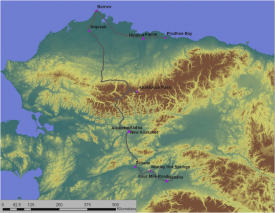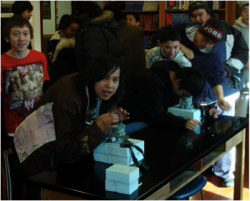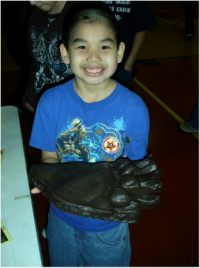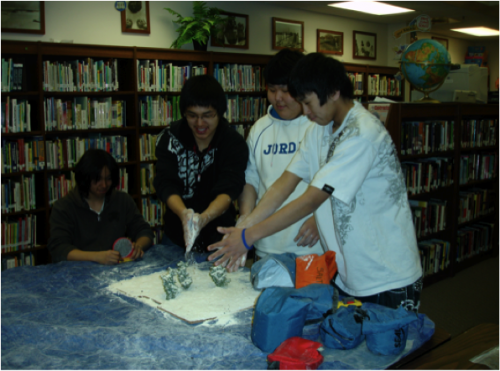By: Matthew Sturm, Cold Regions Research and Engineering Laboratory (CRREL)

The four of us left Fairbanks, Alaska on 26 March 2010, headed for Barrow and Prudhoe Bay on four snowmobiles pulling eight sleds. Our route was historic; it retraced the 1924 U.S. Geological Survey expedition led by Philip Smith and J. B. Mertie, Jr. Theirs was the first scientific expedition to do geologic work north of the Brooks Range and south of the coastal plain. The route took us through the communities of Nenana, Manley, Tanana, Allakaket, Anaktuvuk Pass, Atqasuk, Barrow, and Nuiksut. Our plan was to trace the historic route as closely as possible and to work with students in each of the villages we passed through, using snow as a mechanism to show the kids that science was fun and that they lived in a fascinating place we had come miles to visit. Our path through the Brooks Range had even older historic significance: for thousands of years it has been a corridor of trade between the Inuit of the North Slope and the Koyukon people of the Koyukuk and Yukon rivers.

We spent the months prior to the trip making arrangements with the schools and adding to our repertoire of snow demonstrations. In particular, we tried to crack a problem that has long plagued us working with kids and snow—how to help them see snowflakes and snow crystals. The problem is that it takes a lot of time for the younger kids to get dressed to go outside, and then the environment is distracting. Looking through a microscope at snow crystals when you can run and jump in the snow is almost impossible. So we worked out a way to bring the crystals into the classroom without having them melt. We manufactured cold stages, which are surfaces capable of displaying frozen snow crystals. Some were made of smooth heavy stones, which have considerable thermal mass that is resistant to heat fluctuations. Others were plates we could cool by pumping salt brine through with a simple squeeze bulb. Foam boxes surrounded both models and they worked great. In each community we set up cold stages and the students used a high-quality microscope to get their first look at the hidden and beautiful world of snow crystals.

The second demonstration, on loan from Mike Taras of Alaska Department of Fish and Game, was a set of materials to illustrate animal tracks in the snow. The kit included casts of animal footprints and pictures of tracks. The huge cast of the brown bear track was the favorite. Most rural Alaskan children hunt and fish, so this connection between snow and game was particularly popular.
Finally, we added an avalanche demonstration that was developed by Bill Glude of Juneau. In the demonstration, a layered snow cover is simulated by sprinkling a board with flour, salt, potato flakes, and millet—representing fine-grained snow, coarse-grained snow, surface or depth hoar, and grauple (snow pellets), respectively. Miniature rocks, trees, and Playmobile snowmobiles are included on the board to add to the fun. The board is tipped up until the faux snow cover slides off. The demonstration does a nice job of simulating many features of avalanches. The students loved getting their hands into the bags of flour and salt. Even teenagers, for whom participating in science experiments can be "uncool," enjoyed this activity. We also went outside to dig snowpits and measure snow depths.
The impact of outreach is always hard to quantify, but the response from the students and teachers revealed that we were successful in reminding the students of the uniqueness and interest of their snowy environment, and we provided a welcome break from day-to-day classroom work. The novel way we arrived (novel in the sense that we have traveled farther by snowmobile than most of the people the students know) enhanced our reputation. Our arrival in a village required no advertising—everyone heard about us through the grapevine within a few hours of our arrival.
In the end, we safely arrived in Prudhoe Bay on 20 April, having traveled 2000 km and having reached about 600 students and teachers during our travels.
For more information about the expedition, contact Matthew Sturm (msturm [at] crrel.usace.army.mil).

